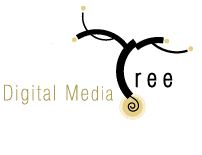$ummer $qua$h
Comcast throttles BitTorrent traffic and makes seeding (basically) impossible!
Unfortunately, these more aggressive throttling methods can’t be circumvented by simply enabling encryption in your BitTorrent client. It is reported that Comcast is using an application from Sandvine to throttle BitTorrent traffic. Sandvine breaks every (seed) connection with new peers after a few seconds if it’s not a Comcast user. This makes it virtually impossible to seed a file, especially in small swarms without any Comcast users. Some users report that they can still connect to a few peers, but most of the Comcast customers see a significant drop in their upload speed.
The throttling works like this: A few seconds after you connect to someone in the swarm the Sandvine application sends a peer reset message (RST flag) and the upload immediately stops. Most vulnerable are users in a relatively small swarm where you only have a couple of peers you can upload the file to. Only seeding seems to be prevented, most users are able to upload to others while the download is still going, but once the download is finished, the upload speed drops to 0. Some users also report a significant drop in their download speeds, but this seems to be less widespread. Worse on private trackers, likely that this is because of the smaller swarm size
two new bars on ludlow
DirecTV Moves to Put Net on Power Grid
Currently limited to The Metroplex(tm), also known as Dallas-Fort Worth. This gives DIRECTV a route to triple play (voice, video, data). Telephony can ride over the IP link (Voice over IP, aka VoIP). This helps counter the triple play offerings of cable and telco operators.
Currently limited to The Metroplex(tm), also known as Dallas-Fort Worth. This gives DIRECTV a route to triple play (voice, video, data). Telephony can ride over the IP link (Voice over IP, aka VoIP). This helps counter the triple play offerings of cable and telco operators.
rip da scooter
East River turbine update:
The small number of turbines already placed in the East River by Verdant Power have been temporarily removed as the strong currents continue to overwhelm the physical construction of the underwater "windmills." The six turbines that were placed in the water last December and were capable of supplying 1,000 daily kilowatt hours of power and serving the Gristedes supermarket on Roosevelt Island could not withstand currents....
The New York Times reports that the company is encountering the setbacks with optimism, encouraged that the East River possesses even more power than originally planned for. "'The only way for us to learn is to get the turbines into the water and start breaking them,' said Trey Taylor, the habitually optimistic founder of Verdant Power."
Today is the 8th anniversary of the registering of digitalmediatree.com.
The other day I was pondering how scientists tattoo themselves with their science.
Just returned from a beach trip with Burnadette and JimL. NPR is reporting that Rove has resigned. Seems a lot has happened these past 4 days..
rip elizabeth murray
Her sources ranged from Cézanne, Picasso, Gris and Miró to Stuart Davis, Al Held and Agnes Martin. As she remarked in the 1987 catalog to her first big museum show, which traveled to the Whitney in 1988: “Everything has been done a million times. Sometimes you use it and it’s yours; another time you do it and it’s still theirs.”
just flipped on meet the press to see markos (daily kos) moulitsas on.
canadian geese on the move out in bucks co.
SCO v. IBM and Novell: End of the line
A company created (out of the shell of a reputable company) to extract money from Linux users fails to monetize their litigation strategery.
A company created (out of the shell of a reputable company) to extract money from Linux users fails to monetize their litigation strategery.
little league world series on espn tonight and all day tomorrow.
tornados in bkln (kensington area / rooftops torn off brownstones and trees down ) / flooding / nyc commute chaos this am
Exorbitant award in Alcatel-Lucent MP3 patent case overturned -- US judge overturns $1.5 bn ruling against Microsoft
